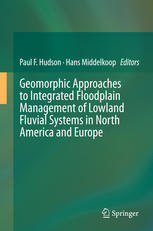

Most ebook files are in PDF format, so you can easily read them using various software such as Foxit Reader or directly on the Google Chrome browser.
Some ebook files are released by publishers in other formats such as .awz, .mobi, .epub, .fb2, etc. You may need to install specific software to read these formats on mobile/PC, such as Calibre.
Please read the tutorial at this link: https://ebookbell.com/faq
We offer FREE conversion to the popular formats you request; however, this may take some time. Therefore, right after payment, please email us, and we will try to provide the service as quickly as possible.
For some exceptional file formats or broken links (if any), please refrain from opening any disputes. Instead, email us first, and we will try to assist within a maximum of 6 hours.
EbookBell Team

4.0
16 reviewsThis volume provides a comprehensive perspective on geomorphic approaches to management of lowland alluvial rivers in North America and Europe. Many lowland rivers have been heavily managed for flood control and navigation for decades or centuries, resulting in engineered channels and embanked floodplains with substantially altered sediment loads and geomorphic processes. Over the past decade, floodplain management of many lowland rivers has taken on new importance because of concerns about the potential for global environmental change to alter floodplain processes, necessitating revised management strategies that minimize flood risk while enhancing environmental attributes of floodplains influenced by local embankments and upstream dams.
Recognition of the failure of old perspectives on river management and the need to enhance environmental sustainability has stimulated a new approach to river management. The manner that river restoration and integrated management are implemented, however, requires a case study approach that takes into account the impact of historic human impacts to the system, especially engineering. The river basins examined in this volume provide a representative coverage of the drainage of North America and Europe, taking into account a range of climatic and physiographic provinces. They include the 1) Sacramento (California, USA), 2) San Joaquin (California), 3) Missouri (Missouri, USA), 4) Red (Manitoba, Canada and Minnesota, USA), 5) Mississippi (Louisiana, USA), 6) Kissimmee (Florida, USA), 7) Ebro (Spain), 8) Rhone (France), 9) Rhine (Netherlands), 10) Danube (Romania), and 11) Volga (Russian Federation) Rivers. The case studies covered in these chapters span a range of fluvial modes of adjustment, including sediment, channel, hydrologic regime, floodplains, as well as ecosystem and environmental associations.